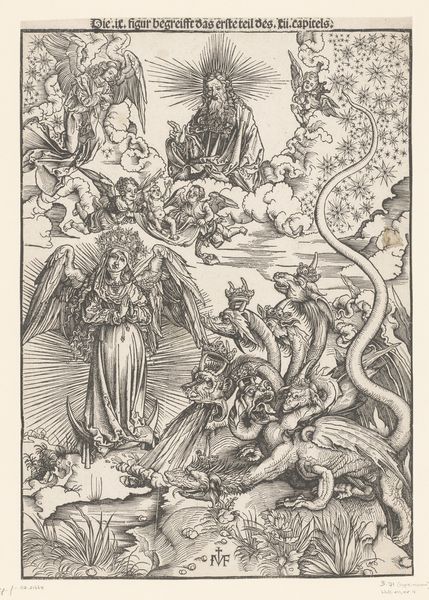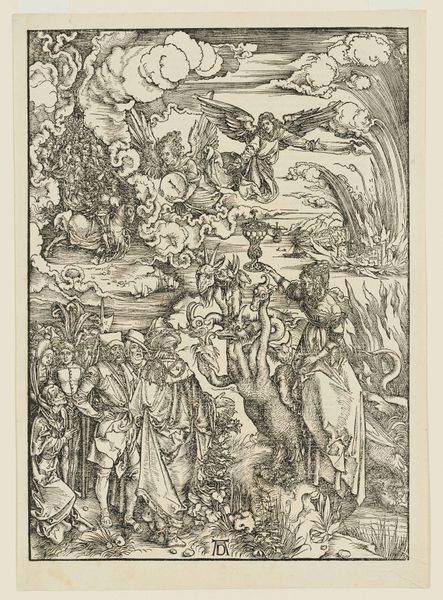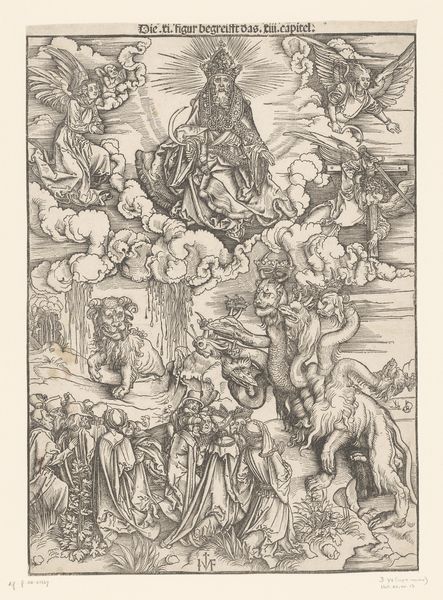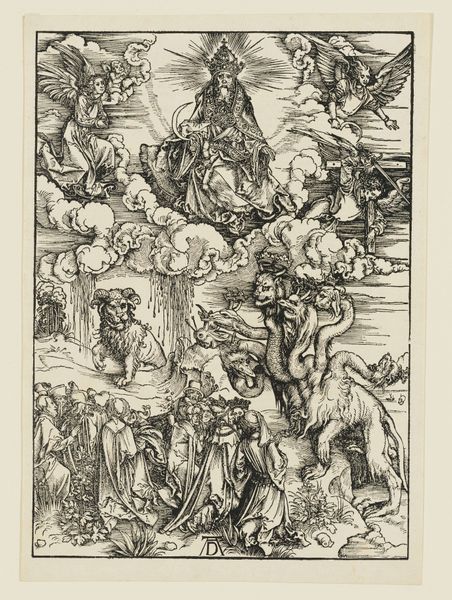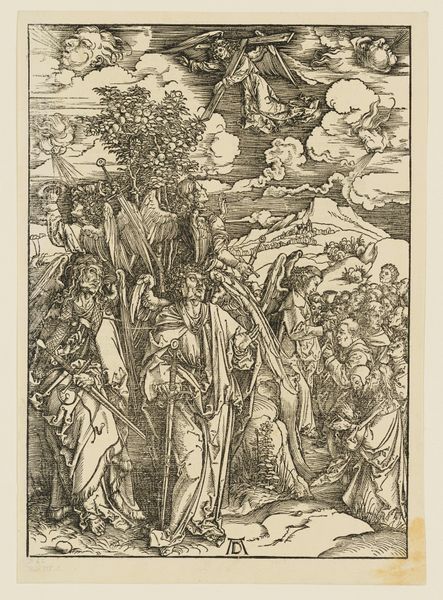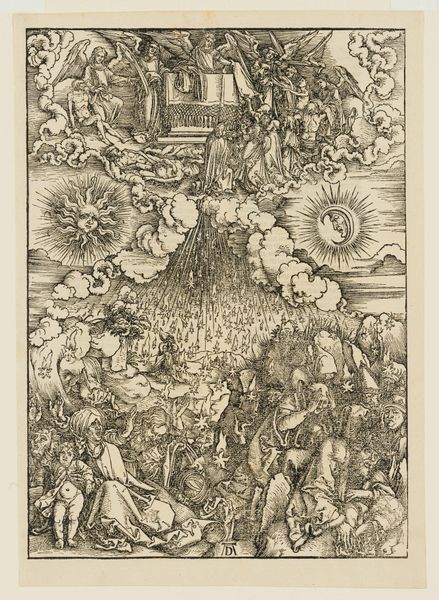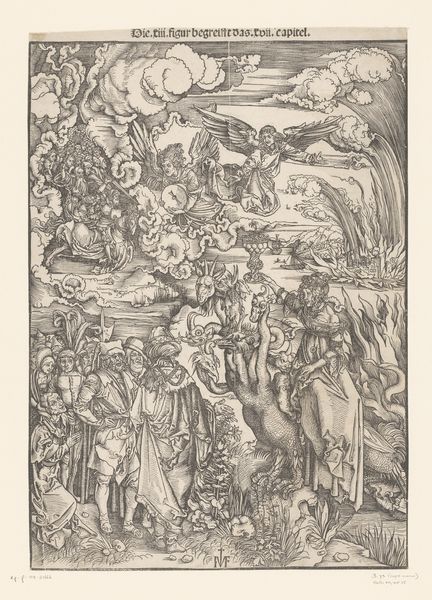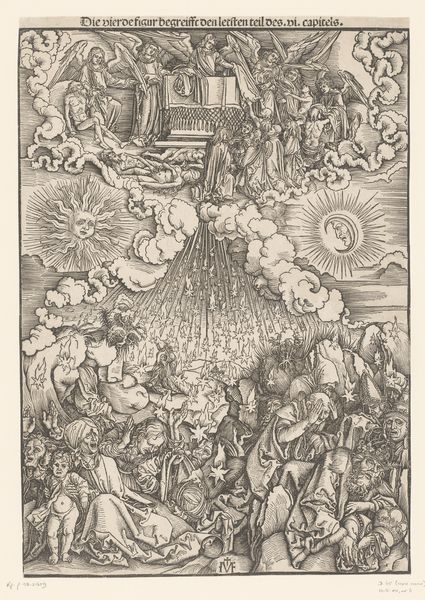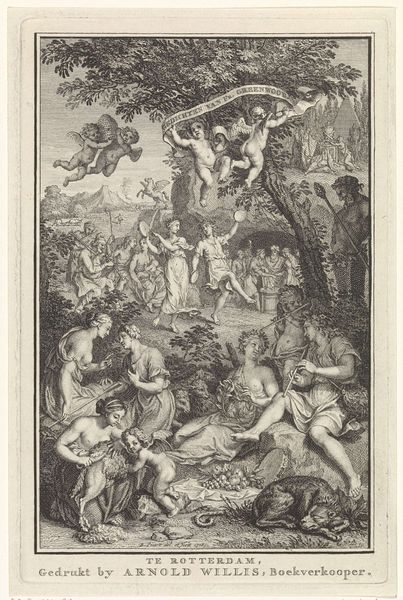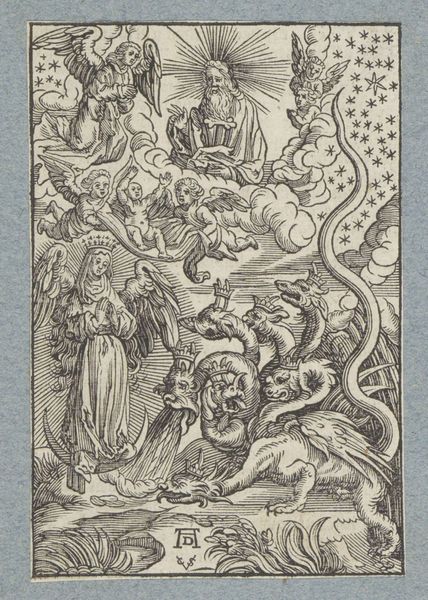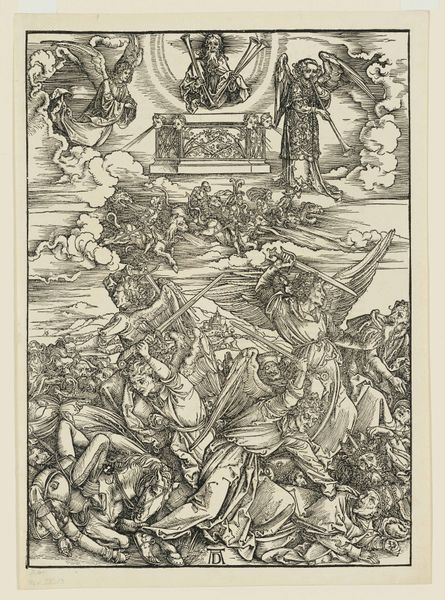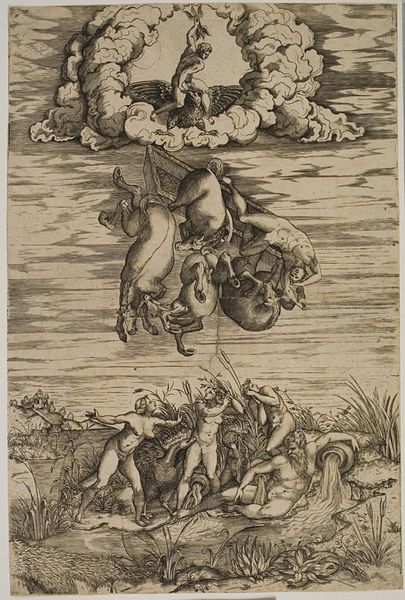
Dimensions: 15 1/2 x 11 1/8 in. (39.37 x 28.26 cm) (image)
Copyright: Public Domain
Editor: This is Albrecht Dürer’s woodcut, "The Apocalyptic Woman," made sometime between 1498 and 1511. It has a pretty intense feel; I'm struck by the sharp contrast between the serene woman and the monstrous beast. What kind of interpretations does it inspire in you? Curator: Looking at this work, I immediately consider the social and political turbulence of Dürer’s time, steeped in religious anxieties. Doesn't the contrast between the celestial woman and the multi-headed beast underscore a deep-seated fear of chaos and the unknown? The imagery obviously refers to the Book of Revelation, but what do you think it tells us about the period’s anxieties about the changing roles of women, too? Editor: That’s a fascinating point. I hadn't really considered that it could represent a perceived threat of empowered women during that time. Curator: Exactly. Consider how Dürer positions the woman above the beast, yet still very much within a cosmic struggle. Her virtue is asserted but simultaneously threatened. It opens up interesting avenues for discussion about gender, power, and vulnerability in the art of the period, doesn't it? How does it speak to contemporary societal dynamics, where anxieties about female empowerment persist? Editor: Absolutely, it really adds layers to the artwork. The discussion also makes you reflect on your own experiences and perspectives, especially gender equality and other related movements today. I appreciate seeing the work from a different angle. Curator: Indeed, situating historical artworks within contemporary discourse encourages us to examine ongoing power structures and biases. Dürer's print isn’t just a religious depiction; it's a commentary on social dynamics and anxieties that resonate even now.
Comments
No comments
Be the first to comment and join the conversation on the ultimate creative platform.
